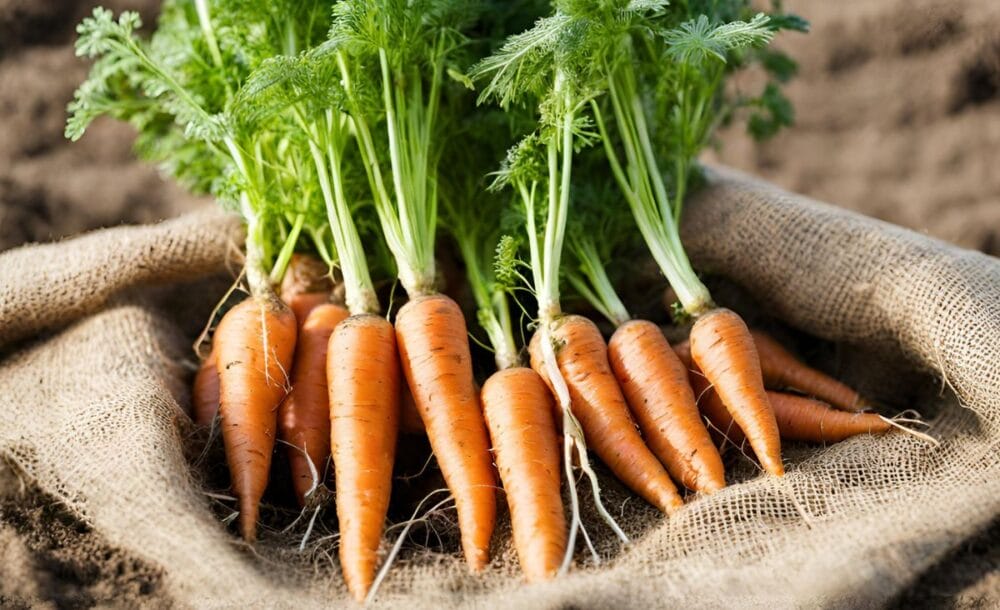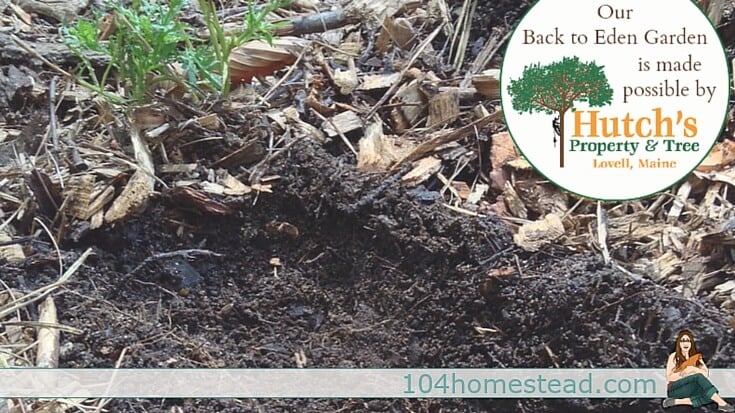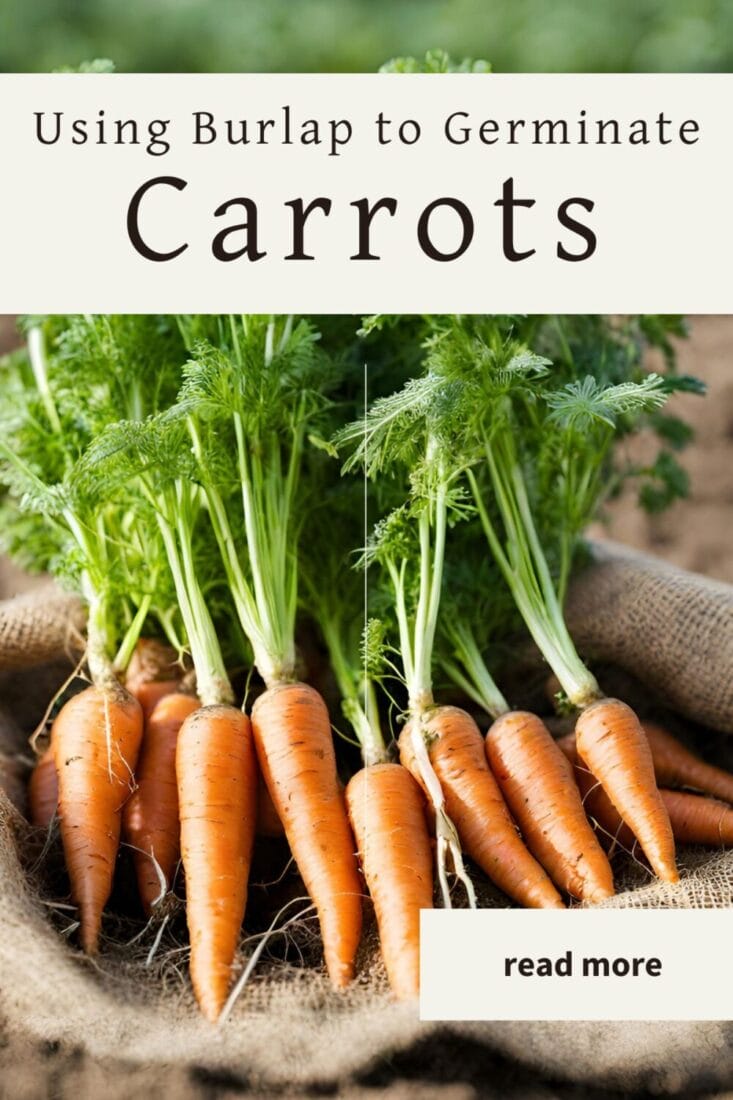Rooted Success: Growing Carrots with Open-Weave Burlap
Discover the secret to hassle-free carrot gardening! Learn germination tricks, choosing the right burlap, and budget-friendly options.

It took me several years to be a carrot gardener. Yes, apparently, you have to be a special kind of gardener to grow carrots. They certainly aren’t one of the easiest vegetables to grow. For years, I could grow practically anything… except carrots. I know I’m not alone. I’ve seen the gardening forums. Carrots are extremely discouraging, but they are (in my opinion) one of the yummiest garden gifts. Tomatoes may get all the glory regarding backyard gardens, but carrots are the stars.
Finally, I discovered the trick, and I was in carrot heaven. It is inexpensive, and it will change your carroting world forever.
Germination is the real struggle. Once properly germinated, carrots expect very little from us. A sprinkling of water, maybe a bit of organic fertilizer (but keep the nitrogen to a minimum, or you’ll have beautiful tops and not a lot happening below the soil). The burlap saves you from many of the struggles that come with starting carrots: soil drying out, seeds being unearthed, and ants destroying your emerging seedlings.
Choosing the Right Burlap
Uncover the key to successful carrot gardening—open-weave burlap! Learn why it’s a game-changer, keeping the soil moist and thwarting pesky critters.
Opting for Open Weave Burlap
Open-weave burlap acts as a guardian for your carrot seeds, creating a microclimate that retains essential moisture, shielding them from erratic weather conditions. With its unique texture, this porous fabric not only baffles intrusive critters but also establishes a protective shield against heavy rains.
Finding Inexpensive Burlap
Burlap is pretty darn cheap anyway, but here is a tip for getting an even lower price. Check out wedding clearance at WalMart. I’m not sure why, but apparently, the whole “farm wedding” is a thing. I found pre-cut sheets of burlap (4′ x 8′ – the size of my beds) for only $4.88 as well as rolls of burlap and lace ribbon (6″ x 50′) for only $3.88. I was able to remove the lace from the burlap with just a few snips of the scissors. The rolls of burlap “ribbon” are great for the carrots you companion planted along the front of your tomato beds.
How to Get Your Carrots to Germinate
To use burlap to germinate your carrots, dig furrows for the carrot seeds. I like to use DIY seed tape to make the whole process easier. You don’t want deep furrows, but you’ll want them deep enough to hold the burlap off the emerging seedlings. The soil along the top of the furrows will also help hold the material off.

Securing the Burlap
Secure the burlap over the seedlings using rocks to hold it relatively taught. Keep the area moist with light watering. I find the shower setting on my hose is perfect. Continue this routine until your seedlings are brushing the bottom of the burlap. They should be about 1/2-3/4″ tall at this point. You’ve successfully passed the hard period. Now is the time to remove the burlap.
Ideally, you would be removing the burlap before the carrots have had a chance to grow through it, but you may have waited a bit for a few slow-pokes to catch up. No big deal. Just slide your hand under the fabric and gently free the seedlings.
Back to Eden Method Considerations
Because I use the Back to Eden gardening method, I add a bit of wood mulch around my seedlings after removing the burlap. The mulch helps retain moisture, which is important since dryness can still be an issue for your tiny carrots. If you don’t use Back to Eden, here are some other good mulch options for your carrots:
- Hay or Straw
- Lawn Clippings
- Mulched Leaves
- Newspaper
One of the keys to growing great carrots is keeping the soil continuously moist. The sudden drenching of dry soil causes the carrots to split. I know we’ve all seen the PG-13 carrot photos. Irregular moisture is what brings about those carrot abnormalities.
Tip: Consider companion planting with carrots to enhance their growth. Planting them alongside tomatoes, onions, and lettuce can create a symbiotic environment, deterring pests and promoting overall garden health.
Frequently Asked Carrot Germination Questions
Want a new and exciting recipe to try your homegrown carrots in? Try my quick and easy Russian Carrot Salad.
If you’ve found value in this blog post and enjoyed reading it, why not share it with your Pinterest community? Pin the image below and spread the love!

Unlocking the mystery of growing carrots has transformed the daunting task into a rewarding venture. Embracing the magic of open-weave burlap has proven to be a game-changer, safeguarding against common germination challenges. Remember, the journey doesn’t end with germination—maintaining consistent moisture, using suitable mulch, and understanding your chosen gardening method all contribute to a thriving carrot harvest.
So, armed with burlap and newfound knowledge, dive into the world of carrot gardening and savor the sweet success of homegrown goodness!
What are your go-to tips for cultivating carrots? Share your insights in the comments below, and let’s keep the carrot community thriving!

